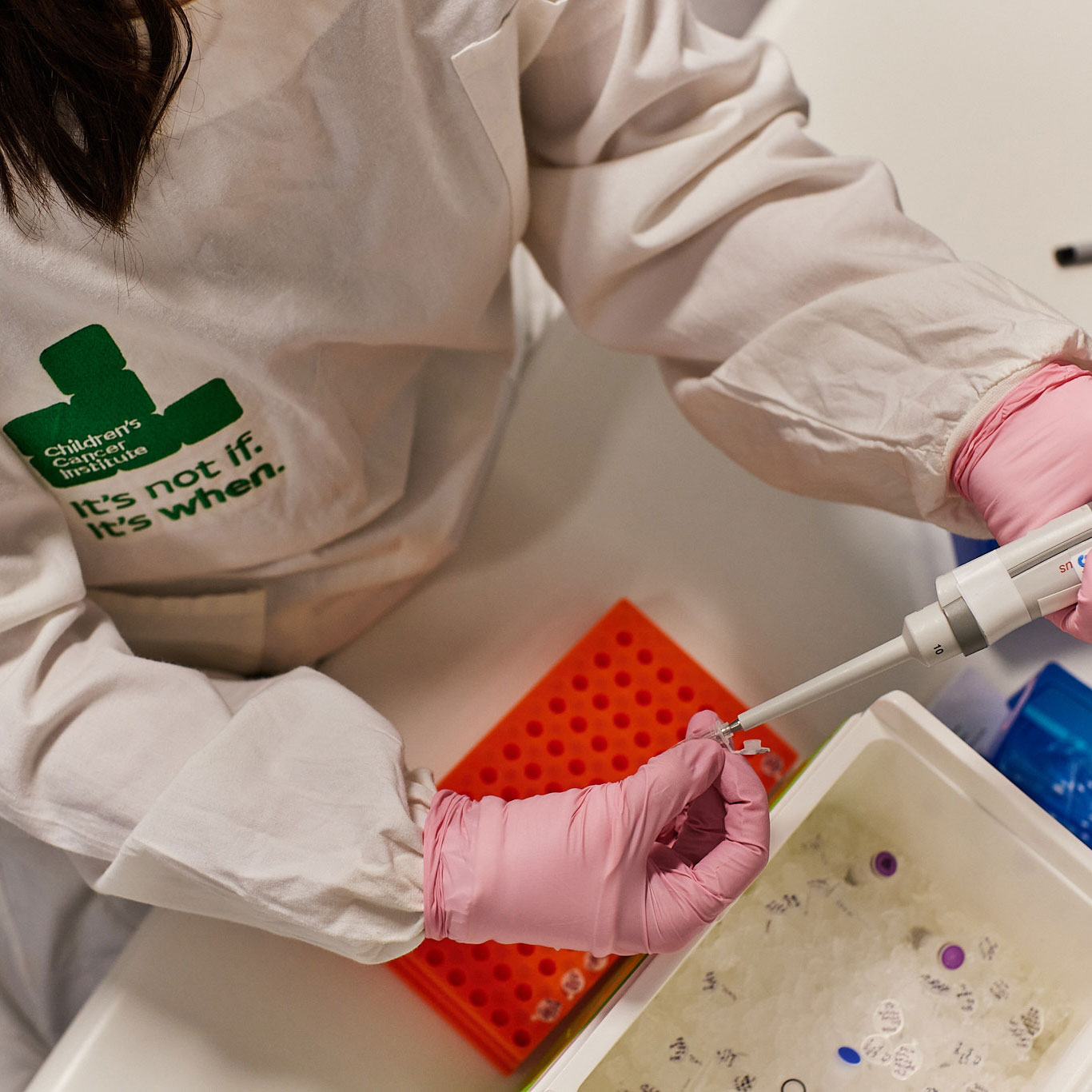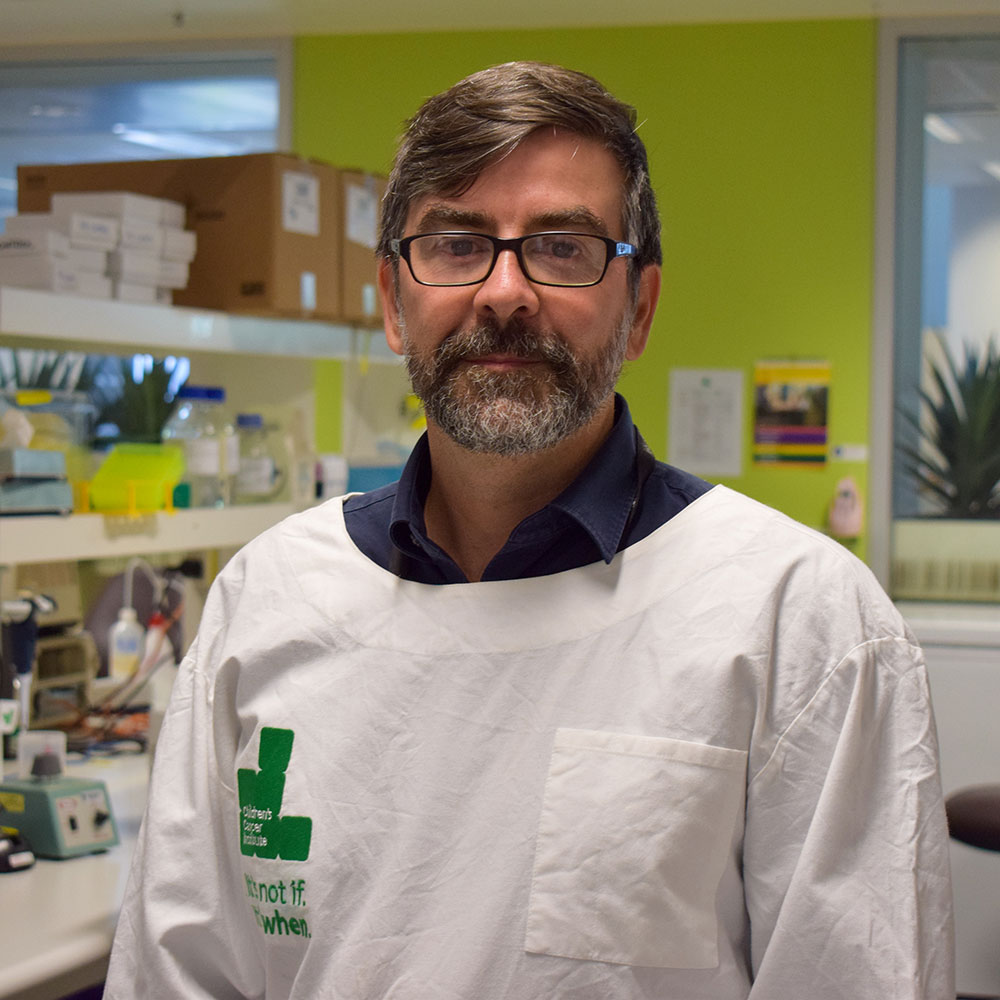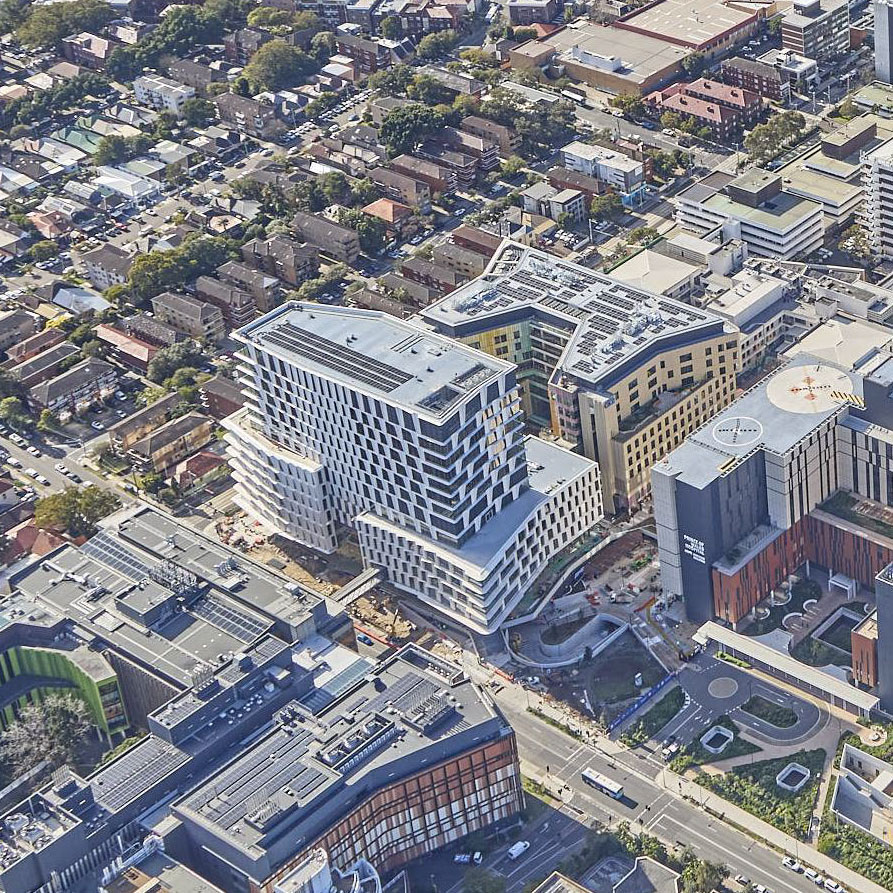Research into some of the most common cancers in children has received a major funding boost with the announcement of a $1.49 million grant from the Australian Government’s Medical Research Future Fund (MRFF).
The research, jointly led by scientists at Children’s Cancer Institute and WEHI, will focus on improving outcomes for children with ‘high-risk’ cancers – leukaemias, sarcomas and neuroblastomas that grow aggressively and are difficult to treat, often leading to relapse and death.
“This grant will allow us to address three significant gaps in knowledge that are hindering progress in improving outcomes for children with high-risk cancers,” said Professor Glenn Marshall AM, Head of Translational Research at Children’s Cancer Institute, and one of the Chief Investigators on the MRFF grant. “These include the causes of these cancers, the most effective way to treat them, and how to predict and avoid relapse.”
Excitingly, the research is likely to not only lead to improved treatment of childhood cancers, but also to potential prevention strategies. “We know of certain genetic mutations that lead to cancers in some children, but in the vast majority of cases, the cause remains a mystery,” explained Professor Murray Norris AM, Deputy Director of Children’s Cancer Institute, and Co-Head of its Molecular Targets and Cancer Therapeutics Theme, who leads this aspect of the proposed research.
“Once we understand the key molecules that drive a particular cancer, we have the opportunity to develop ‘inhibitors’ − agents that target those molecules and block their action − and these can potentially be used both for treatment and prevention. We’ve recently identified a gene called RUNX1T1 that appears to be critical to the development of neuroblastoma, and possibly other high-risk childhood cancers as well. What we’re now looking to do, in partnership with WEHI, is develop an inhibitor to block the action of this gene.”
Currently there is a lack of effective treatment options for children diagnosed with high-risk cancers. While new targeted treatments offer some hope for these patients, there is little understanding of how to optimise targeted agents into combination therapies, which experience has shown tend to offer the best opportunities for sustained response and therefore the best long-term outcomes. To address this shortcoming, the research team will be testing two new targeted therapies (DFMO/AMXT 1501 and CBL0137) with different combinations of drugs, and investigating which children are most likely to respond to which treatments.
“We’ve learnt that each child’s cancer is unique, which means treatments need to be personalised,” explained Professor Michelle Haber AM, Executive Director of Children’s Cancer Institute and Co-Head of its Molecular Targets and Cancer Therapeutics Theme, who leads the Institute’s Experimental Therapeutics Group. “To work out which treatment is best suited to each individual child, we will be using our highly specialised living models of disease, mouse ‘avatars’ that each grow the cancer cells of one child with cancer and so represent that patient as closely as possible.”
The researchers also plan to develop a new diagnostic tool, using technology known as single cell transcriptomic analysis and whole exome sequencing, to help predict and avoid relapse in children treated for high-risk cancer. This will involve analysing the tumour cells of children before and after they receive chemotherapy to identify resistant ‘subclones’ – small populations of cancer cells that contain a genetic variation conferring resistance to treatment drugs. Once identified, these subclones would be specifically targeted in an effort to prevent tumour progression and disease relapse.
“Our goal here is to develop a novel precision medicine diagnostic that can be used in real time to optimise treatment,” said Professor Marshall. “In time, we anticipate this kind of analysis will become routine for all chemotherapy-treated cancer. By individualising treatment in this way, we can maximise the chance of success for every patient.”
About Children’s Cancer Institute
Originally founded in 1976 by the parents and doctors of children with cancer, Children’s Cancer Institute is the only independent medical research institute in Australia wholly dedicated to research into the causes, prevention and cure of childhood cancer. More than forty years on, its vision remains to save the lives of all children with cancer and improve their long-term health, through research. The Institute has grown to employ more than 300 researchers, operational staff and students, and has established a national and international reputation for scientific excellence. The Institute focuses on translational research, with an integrated team of laboratory researchers and clinician scientists who work together in partnership to discover new treatments which can be progressed from the lab bench to the beds of children on wards in our hospitals as quickly as possible. These new treatments are specifically targeting childhood cancers, to develop safer and more effective drugs and drug combinations that will minimise side-effects and ultimately give children with cancer the best chance of a cure with the highest possible quality of life. More at ccia.org.au
About WEHI (Walter and Eliza Hall Institute of Medical Research)
WEHI is where the world’s brightest minds collaborate and innovate to make life-changing scientific discoveries that help people live healthier for longer. Our medical researchers have been serving the community for more than 100 years, making transformative discoveries in cancers, infectious and immune diseases, developmental disorders, and healthy ageing. WEHI brings together diverse and creative people with different experience and expertise to solve some of the world’s most complex health problems. With partners across science, health, government, industry, and philanthropy, we are committed to long-term discovery, collaboration and translation. At WEHI, we are brighter together. Find out more at www.wehi.edu.au














